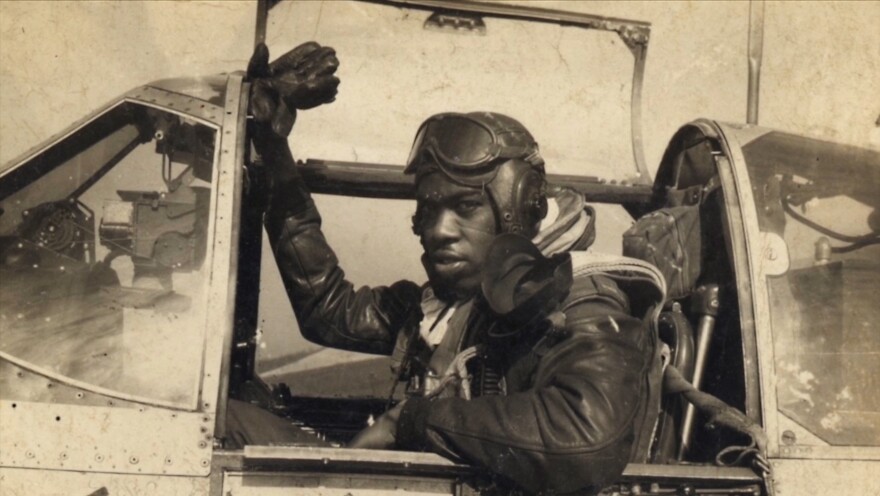Unforgotten is a cross-platform series and podcast chronicling Connecticut's ties to slavery. Learn more.
Pat Wilson Pheanious spent a lot of her childhood trying not to be noticed.
Growing up Black in the predominantly white town of Ashford, Connecticut, she remembers school lessons about the Civil War.
All eyes, it seemed, would be on her.
“There would be pictures … and that was me. That was the representation of me to my classmates. I was the living slave,” Wilson Pheanious says. “I did not have a context for understanding the richness of my history.”
Decades later, Wilson Pheanious would discover the depths of that history.
A phone call from a stranger would link her with ancestors enslaved in Connecticut before the American Revolution. Wilson Pheanious says the news gave her a sense of connection to the past, which would reshape her view of patriotism.
“Finding that history gave me a sense of ownership and a sense of belonging ... I wish I hadn’t had to wait till I was Social Security age to come to believe that I was really an American,” Wilson Pheanious says.

But, as a kid, she didn’t know about that history. She didn't know that thousands of people were enslaved in Connecticut — and that thousands more were enslaved across New England.
“I learned nothing about enslavement in the Northeast. I certainly had no idea that I had … generations of ancestors going back to 1727,” she says.
'A family I didn’t know that I had'
It started with a phone call.
Wilson Pheanious, a former Connecticut state representative, was running for elected office at the time and recalls her husband, somewhat perplexed, handing her the phone.
“He said ‘there's a man on the phone that knows a bit too much about you and I want you to talk to him,’” she recalls. “It turned out to be a middle school teacher from Guilford, who was so excited. And he was giving me all of this information about people that I had no knowledge of.”
The teacher was Dennis Culliton, founder and executive director of the Witness Stones Project. He and others were researching the history of slavery in Guilford. They spent years reading through early court records, journals and personal papers. They found documents about Wilson Pheanious’ ancestors dating from before the American Revolution up to today.
After that first phone call, the pair eventually met up.
“I brought her a 7-foot-long genealogy that I cut and pasted from Ancestry[.com] that I had put together on her family,” Culliton recalls.
“And he gave me a family I didn’t know that I had,” Wilson Pheanious says.
'They were promised freedom'
The family story starts with two teenagers, enslaved in Africa and brought to Guilford by David Naughty in 1727.
“They were imported, which I thought was an odd word,” Wilson Pheanious says. “That simply meant he avoided paying taxes, because they came in through Boston and he was bringing them to Guilford.”
The children were named Montros and Phillis.
They arrived in Guilford on different ships, with different captains. But the pair would be married and eventually start having children.
About 10 years later, Naughty died.
“He left a will. And in that will, he freed Montros and Phillis and their children,” Wilson Pheanious says.
The family was promised a house and nearby property. They were also promised money.
But there was a catch.
None of that would be granted until Ruth Naughty, David’s wife, died.
And she lived for another 30 years.

“So they were promised freedom, but they didn’t all obtain it,” Wilson Pheanious says.
Phillis would die enslaved. In 1772, Ruth Naughty would finally free Montros, but she altered her husband’s dying wishes, revoking that promise for Montros’ children, including a daughter born in 1751 named Candace.
In her will, Naughty wrote, it would be “much better for them to live in some good regular and religious families as servants, than to enjoy freedom.”
'She is part of this house'
As Wilson Pheanious walks through the home where her “Aunt Candace” used to live and work, a kinship reaches across centuries.
“She is a part of this house. And when I walk around here, I feel her. I connect to her,” Wilson Pheanious says.
Today, the home is known as the Hyland House Museum. Built in 1713, it’s a quaint saltbox-style house in Guilford, a small coastal community.
Candace was the youngest child of Montros and Phillis.
Enslaved people were often assigned first names and not given last ones. Once they turned 20 years old, each child in this family was indentured out to neighbors.
At the age of 22, after Ruth Naughty died, Candace would remain indentured to the nearby Parmalee family who lived at the Hyland House.
“Candace was both enslaved and indentured,” Wilson Pheanious says. “For 12 pounds a year, each of the children was rented out, in effect. So she was rented, if you will. But it was sort of like a life rental.”
Wilson Pheanious explores the house, explaining she’s a ninth generation descendant of Candace’s enslaved parents, Montros and Phillis.

“She lived here for nearly 20 years. And there's mention of her now, but for so many years, no one knew. That wasn't a part of the Hyland House story,” Wilson Pheanious says.
She and her son, Cheo Hodari Coker, walk through the home, soaking in the setting for this story that for so many years went untold.
Inside the dining room where Candace worked is a fireplace and a nearby pantry. Above is an unheated attic where Candace lived for about two decades.
Wilson Pheanious’ mind drifts across centuries, and she shares how she was inspired to write a poem about this home, and the people in it, including Candace’s sister, Flora.
“The poem 'Grandma Flora' started off as an open letter,” she says. “Because I said to myself, ‘What would I say to this woman if I had actually been to Hyland House and walked around in her footsteps?’”
Candace eventually married and was emancipated in 1789. She worked as a spinner and baker. She died in 1826 in Guilford.
'This is my country'
Future generations of this family would include a Revolutionary War soldier, a World War I machinist, and a World War II Tuskegee Airman named Lt. Bertram W. Wilson, Pat Wilson Pheanious’ father.
As a “Red Tail,” Lt. Wilson flew P-51 fighter planes, escorting bombers. He was awarded the Distinguished Flying Cross, the Air Medal, and the Bronze Star. He also received more medals as a combat pilot in Vietnam.

Wilson Pheanious served in the Connecticut House of Representatives, representing the state’s 53rd District, and as commissioner of the Department of Social Services. Coker is a writer and producer, known for the Marvel TV series “Luke Cage” and the film “Notorious.”
“When you’re able to look back at your lineage and understand that you have relatives that were not only in the Revolutionary War – but in virtually every single American conflict – then you think differently about patriotism,” Coker says.
Anytime he’s had a hard day, Coker says he thinks about his grandfather.
“Fighting in that [P-]51 Mustang … how it gave him a certain fortitude and confidence to fight any kind of aggression that he faced coming home,” he says.
It’s not just genealogy or genetics, Coker says. A lot of it is belief.
“Just the fact that knowing that somebody in your family did this makes you push yourself that much harder,” he says.
“Because when you can cite people that have done some of the things you want to do, it makes you think differently about your life.”
The history is important for families whose ancestors were enslaved, but Coker says it’s just as important for families whose ancestors were not.
Because America’s strength, he says, is all of us.
“Now that we understand who it is we are, what do we do with this? And what’s the importance of knowing who you are?”
“It shouldn’t be just shame and anger,” Coker says. “It also should be a sense of ownership – that this is my country as well.”
Read more from Unforgotten: Connecticut's Hidden History of Slavery
Chapter 2: ‘This is my country': A family learns their ancestors were enslaved in Connecticut
About the series: Why we're reporting on Connecticut's history of slavery
Subscribe to the podcast
Learn more about our Unforgotten podcast, which features additional reporting and conversations.
Send us your feedback
Share your thoughts on the stories in this series via email at unforgotten@ctpublic.org.








